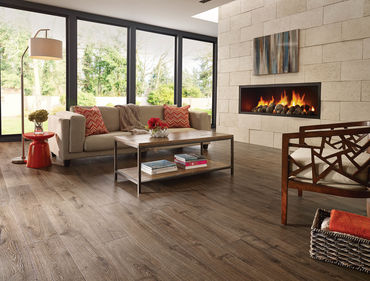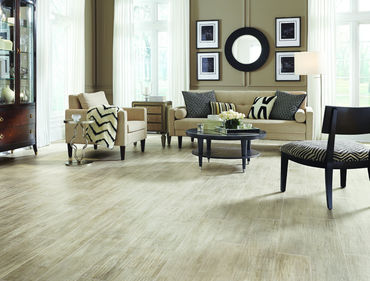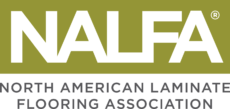by Anthony Pallandro, NALFA Certified Installer
Laminate flooring is designed to be a floating floor that may be installed over virtually any type of sub floor. And by “floating”, we mean that it doesn’t need to be nailed or glued to the sub floor. Laminate planks are assembled together using an extremely strong mechanical locking system that creates a beautiful finished floor. One of the biggest benefits to installing a floating floor is the limited amount of floor prep needed. The need to remove old floor coverings and adhesive, many of which have asbestos content, can be a real hassle. On large commercial jobs the cost of hiring an asbestos abatement company and bead blasting the concrete may be feasible, but on most residential jobs this is cost prohibitive. Floating the floor eliminates the need for removal, in most cases.
This being said, it in no way means that floor prep is not needed. Always check to confirm that the finished floor height will not be a problem. For example, for installations in the kitchen, remove the front panel of the dishwasher and check for leg adjustments. Locking it in place with the floor could cause some problems. Also, check for clearance at the top of the refrigerator. Finding out that it doesn’t fit back its cubby hole after the floor is installed can also be a problem.
Most manufacturers recommend that the floor be flat to within 3/16” in a 10 ft. radius. These measurements are consistent with most other types of floor coverings. On floating floors, vertical movement needs to be kept to a minimum. I often hear installers complain that it is difficult to determine if prep is needed when carpet is on the floor. I can assure you, floor prep is needed. I have been installing for 38 years and I can count on my hands how many times I have seen a flat floor that dose not require prep.
Checking for flatness
I like using a laser level. It’s fast and efficient. I shoot a line to a target with a ¼” scale marked on the face. Then, sliding the target along the floor will indicate areas that require leveling. If the line moves up on the target the floor has a low spot, if the line moves down, the floor has a high spot. Use a pencil to mark the areas needing attention. You can also use a straight edge. Lay the straight edge on the floor. 3 quarters stacked equal 3/16″. You can also use a spacer. Anywhere that you can slide the spacer or quarters under the straight edge need fixing. 3 planks clicked together make a nice long straight edge.
Fixing the floor
In many cases I prefer to sand or grind down the high spots as opposed to bring the rest of the floor up to meet the high spots. On concrete floors, I use a grinder with a diamond wheel. Make sure to use a dust shroud and a vacuum attached. You can trash a house in seconds without it. For low spots, fill with a Portland based leveling compound. I like to use self drying levelers. Or, patch a day ahead to avoid adding water to the back of the planks which could be a big problem.
IMPORTANT NOTES:
- Remember, new concrete must cure for a minimum of 60 days before it’s tested for moisture.
- Cover all concrete sub floors with manufacturers approved vapor retarder.
- Wood sub floors must be structurally sound and deflection free.
- I like to use a sander or portable planer to take down high areas. The seams on OSB are always an issue. Remember to set the nails before using the plane.
- To fill in low spots, use patching compounds that are intended for this use. Check the instructions for thickness limitations.


